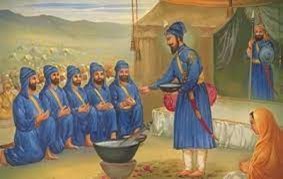Vaisakhi: HHJ Jinder Singh Boora shares his experience
“Vaisakhi” is normally celebrated on the 13th or 14th April of each year. In Northern India, it is traditionally a joyous period when crops are harvested. However, Sikhs celebrate Vaisakhi for another reason: it marks the birth of the “The Khalsa,” a community into which devout Sikhs are initiated, demonstrating commitment to their faith.
On the day of Vaisakhi in 1699 at Kesgarh Sahib in the town of Anandpur, Punjab, a new Sikh nation was created by Guru Gobind Singh Ji, the tenth Sikh guru.

The Guru convened a large gathering, asking if anyone would lay down their life for him and for God (Waheguru). Five volunteers, titled the “Five Beloved Ones” (Panj Pyare), came forward and were willing to sacrifice themselves. They were baptised and declared the first members of the Khalsa, a body which stands for bravery, righteousness and spiritual purity.
The instruction given by Guru Gobind Singh Ji to the “Five Beloved Ones” and to all Sikhs thereafter in perpetuity was: “Let all embrace one creed and obliterate differences of race, caste and religion. Let all humanity become brothers and sisters and treat each other with respect. Let no one deem themselves superior to another…” The Guru gave the name “Singh,” meaning “lion,” to men initiated into the Khalsa, and “Kaur,” meaning “princess,” to women. This unifying act represented the removal of the caste system as a symbol of one’s status.
The Guru’s instruction forms the core principles of Sikhism – the importance of freedom, equality for all, and human rights. It reminds Sikhs that the interests of other people, regardless of their background, are as important as one’s own interests. It is this ethos that Sikhs honour during Vaisakhi.
How do my family and I celebrate? There is no overt “celebration” as such. For us, Vaisakhi is a time for worship and reflection. We take time to discuss whether we as a family have done enough, and how we can do more, for charitable causes. We scrutinise our values and priorities to see how we can best abide by the instruction our Guru gave us in 1699. It is an instruction as relevant today as when it was first proclaimed.
During Vaisakhi, members of the Sikh community often attend the Gurdwara, which welcomes all members of the public. Here, devotional music (kirtan) is performed, vegetarian food (langar) is served to everyone, and Sikhs undertake selfless service (seva). This is in line with Sikh philosophy that sharing music and food are routes to creating cohesion between people. Processions may also include martial arts displays, representing courage and the Sikh tradition of standing up to those who attack and oppress the innocent.

“ਨਿਵਣੁ ਸੁ ਅਖਰੁ ਖਵਣੁ ਗੁਣੁ ਜਿਹਬਾ ਮਣੀਆ ਮੰਤੁ ॥
Humility is the word, forgiveness is the virtue, and sweet speech is the magic mantra”.
Salok Baba Sheikh Farid, Guru Granth Sahib, Ang 1384
